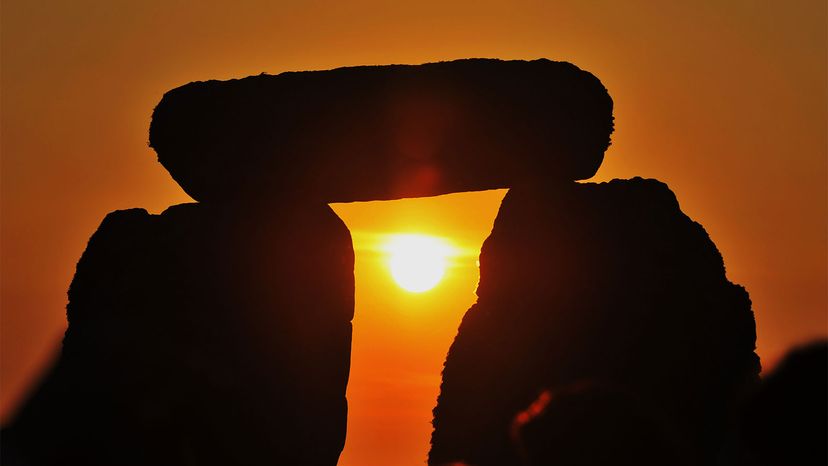
Image: Rufus Cox/Getty Images
About This Quiz
Each year, Earth sees two equinoxes and two solstices. But how much do you actually know about these events, why they occur and customs surrounding them? Take the quiz and find out!
Which landmark was shuttered on solstice for 16 years?
The Great Pyramid, Egypt
Stonehenge, England
Stonehenge was originally built by druids who performed ceremonies during the summer and winter solstices. Today, thousands gather on those days to watch the sun rise. Stonehenge was closed to the public on solstices for 16 years due to rioting between partiers and law enforcement. It was reopened in 2000.
The Temple of Artemis, Greece
Which of these days is the longest of the year?
winter solstice
autum equinox
summer solstice
The summer solstice is the longest day of the year, usually occurring around June 21. On that day, Earth is positioned in its orbit so that the North Pole is leaning most toward the sun. Locations north of the equator will have more than 12 hours of daylight. The winter solstice is the shortest day of the year, usually occurring around December 21 in the northern hemisphere.
What part of Earth is the sun positioned over during the spring and fall equinoxes?
the North Pole
the equator
Twice a year, the sun finds its temporary home directly over the equator, leaving Earth with relatively equal amounts of day and night. In fact, the word equinox is literally Latin for "equal night."
the Bermuda Triangle
Advertisement
Which event signals the beginning of the window to enjoy the aurora borealis?
winter solstice
spring equinox
autumnal equinox
The autumnal equinox lands on or around September 22 every year, and is also the beginning of the annual opportunity to take in the aurora borealis, also known as the Northern Lights. This period continues to the end of October.
When was the last time the planet Uranus experienced a summer solstice?
1985
It's been decades since Uranus had a summer solstice, and Uranus' northern hemisphere isn't due to have another one until 2030. This is because the planet boasts an axial tilt of 98 degrees! By comparison, the Earth tilts on a 23.5 degree axis, which is how we get those four wonderful seasons.
1901
Never, Uranus doesn't have a summer solstice.
During the vernal (spring) equinox, the sun crosses in front of the constellation Pisces. But before the year 68 B.C.E., the sun used to line up with another constellation. What was it?
Aquarius
Aires
Gravitational forces exerted by the sun and moon cause planet Earth to wobble, and as it wobbles, the sun's relationship with the zodiac calendar changes. Before 68 B.C.E., the sun used to line up with Aires on the spring equinox. Now, it's Pisces. By 2567, the sun will line up with the constellation Aquarius.
Capricorn
Advertisement
During which event will you cast your longest shadow of the year?
winter solstice
The super-long shadow phenomenon occurs during the winter solstice because the sun is at its lowest arc across the sky. Peak time for shadow-length testing is noon!
summer solstice
both solstices and equinoxes
Which of these days is most associated with traditions involving love and fertility?
spring equinox
summer solstice
The longest day of the year gives everyone plenty of time to contemplate love and getting busy. Sweden typically sees a baby boom nine months after the date, and much of Eastern Europe believe it is a day to fall in love.
winter solstice
What appears to come down the side of the El Castillo step pyramid during the vernal and autumnal equinoxes?
an angel
a snake
The Maya specifically designed and constructed the pyramid to make it appear that a snake slithers down its side during the two equinoxes. In reality, it's just a well-positioned shadow.
a bird of prey
Advertisement
True or false: You can only balance an egg or a broom on its end during the equinoxes.
True, the internet doesn't lie.
False, this can be accomplished any day of the year.
The rationale behind this urban legend is that the sun's gravitational pull somehow causes these items to stand on end, but in reality the feat can be accomplished at any day or time with enough practice.
False, you can never balance either item on its end.
You Got:
/10
Rufus Cox/Getty Images